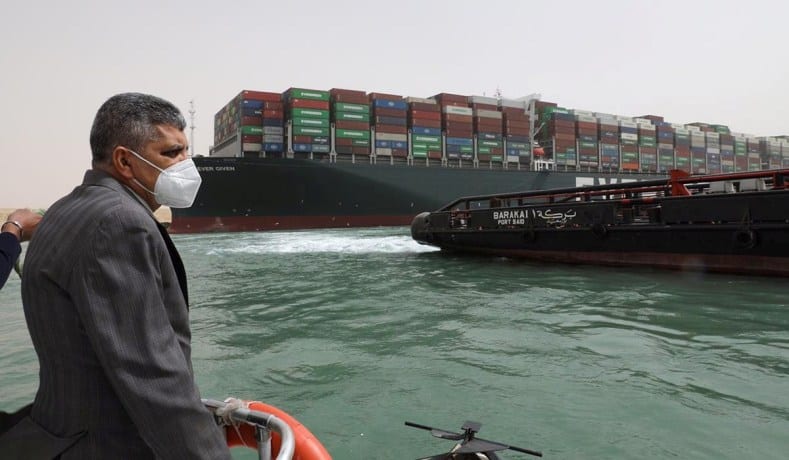(S&P Global Platts) Crude oil futures rose during mid-morning trade in Asia March 26, as the market braced for the possibility that the Suez Canal may remain blocked by the stuck Ever Given container ship for days, while anticipation over the upcoming OPEC+ meeting continued to build in the background.
At 11:12 am Singapore time (0312 GMT), the ICE Brent May contract was up by 45 cents/b (0.72%) from March 25 settling to $62.40/b, while the May NYMEX light sweet crude contract was up by 53 cents/b (0.97%) to $59.09/b.
The jump in prices this morning comes as progress in refloating the Ever Given remains slow, raising concerns the ship could continue to block the Suez Canal for days. The Suez Canal is a critical commodity chokepoint that facilitates almost 10% of total seaborne oil trade, and its blockage has already hindered the passage of oil tankers, according to cFlow, Platts’ trade-flow software.

The chief executive of Royal Boskalis Westminster, a Dutch dredging and heavy lift company involved in efforts to refloat the Ever Given, has said the salvage operation “could take days to weeks”, comparing the giant ship to a “heavy whale”.
Vandana Hari, CEO of Vanda insights, told Platts on March 26 that the recent volatility in oil prices has been the result of markets constantly recalibrating as more information on the Suez Canal incident becomes available.
“The market is starting to factor in the possibility that refloating the Ever Given could take several days to weeks, but the rise in prices this morning is more restrained than the 6% rally seen on March 24, as the market is also looking at the broader picture — there is plenty of oil supply on land and water, and severely impacted countries have the option of tapping into their stockpiles,” Hari said.
Meanwhile, analysts remained concerned about rising COVID-19 infection numbers in Europe, which has forced countries to extend their mobility restrictions, dampening the demand outlook for oil.
With uncertainty over European oil demand creeping back into the market, analysts have highlighted the critical importance of the April 1 OPEC+ meeting, which is expected to provide guidance to the coalition’s production plan from May onwards.
Analysts generally expect the coalition to roll-over their production cuts, as a panic sell-off, like those seen on March 18 and March 23, have highlighted the frailty of oil prices.
“Demand fears remain in the driver seat, which is why we have seen the Brent market getting stuck in the lower half of the $60-$70/b range. My personal opinion is that the coalition will not ease its quotas, keeping supply tight,” Hari said.



